ANIMALS
Meet The Crimson Chat, The Brilliantly Hued Songbird

During the breeding season, the male of this songbird is beautifully colored. It has a bright red crown and belly, a gray back, a black mask, a white throat, a light-colored eye, and blackish wings with thin, pale wing bars.
The crimson chat, also known as the tricoloured chat, saltbush canary, and crimson-breasted nun, is a small bird that is native to Australia. These birds are typically between 10 and 13 centimeters (3.9 to 5.1 inches) long and weigh around 10 to 11 grams (0.35 to 0.39 ounces). Crimson chats have thin and long legs, a bill that curves downward, and a tongue with a brush-like tip. Adult males have brown feathers with red crowns and underparts, a black mask around their eyes, and white throats. Females and young birds have similar coloring but with lighter markings. Males are usually more vibrant in color than females, especially during the breeding season when they want to attract a mate.
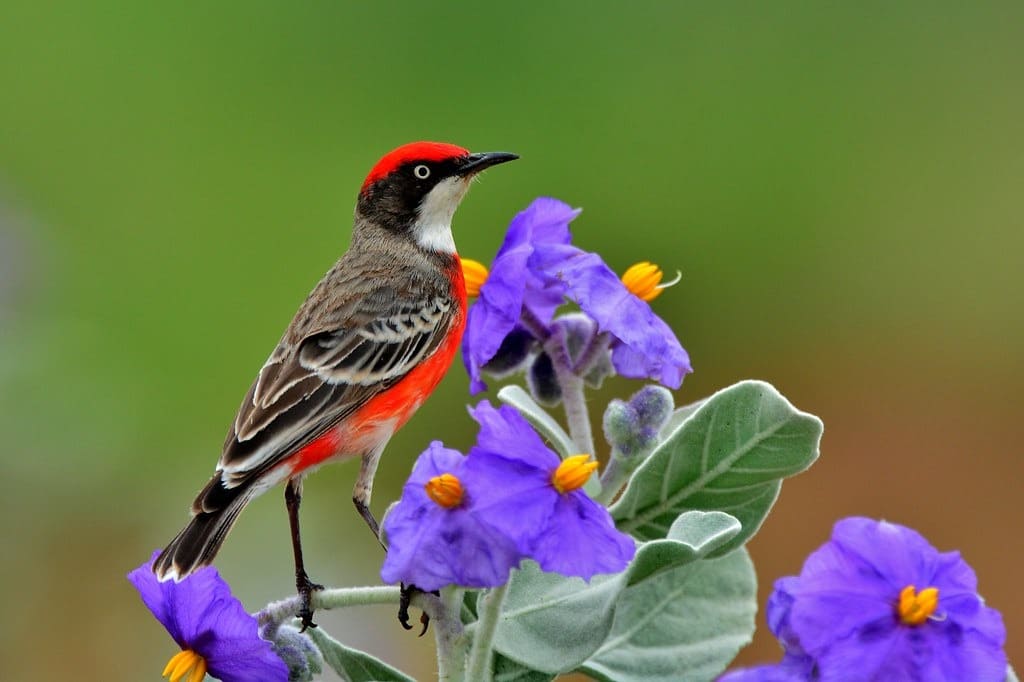 Image source: Laurie R B
Image source: Laurie R B
The crimson chat is sometimes mistaken for the male red-capped robin, but there are three key distinctions between these two species. The male crimson chat has a bright red crown and underparts, a white throat, and a yellow eye. On the other hand, the red-capped robin has a black body with a red chest and cap, white markings on its wings, and a dark eye.
Moreover, the crimson chat has a longer and thinner beak compared to the robin. Whenever you come across a crimson chat, you’ll often find nearby saltbush, Spinifex, or mulga plants, as these are commonly linked to this bird species.
Crimson Chats can be found all across central Australia, spanning from the western coast to the Great Dividing Range, and from the tropical regions to the southern coast.
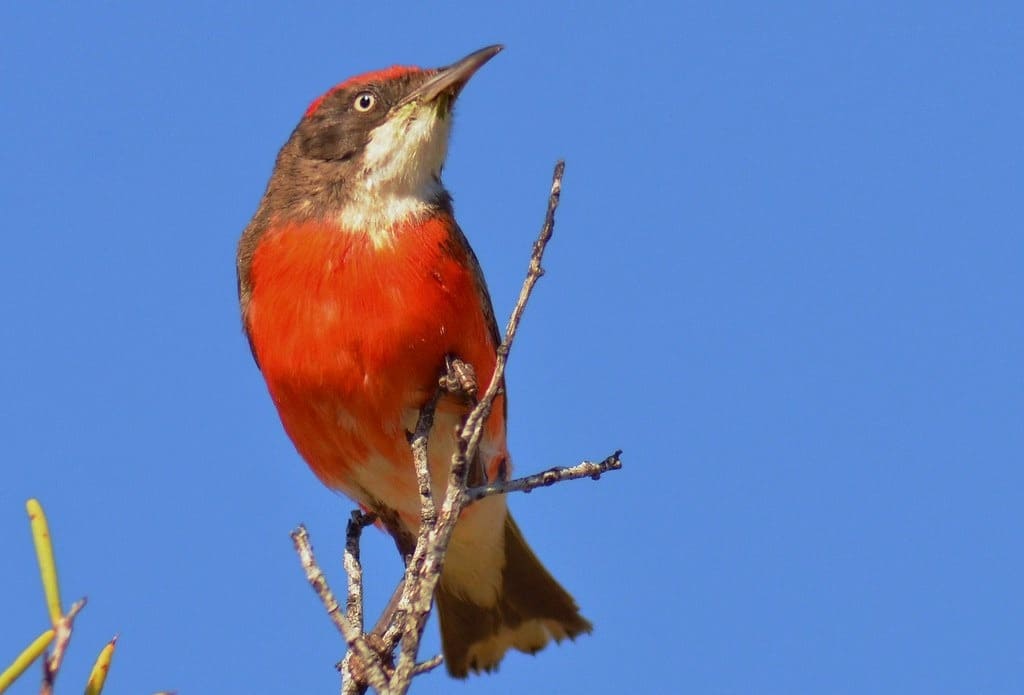 Image source: Laurie R B
Image source: Laurie R B
You can spot them in a range of habitats, such as deserts, semi-arid areas, woodlands, grasslands, and coastal shrublands. They tend to prefer the edges of wetter regions where it’s drier, and they make their homes in different kinds of shrublands like saltbush, bluebush, acacia, and samphire.
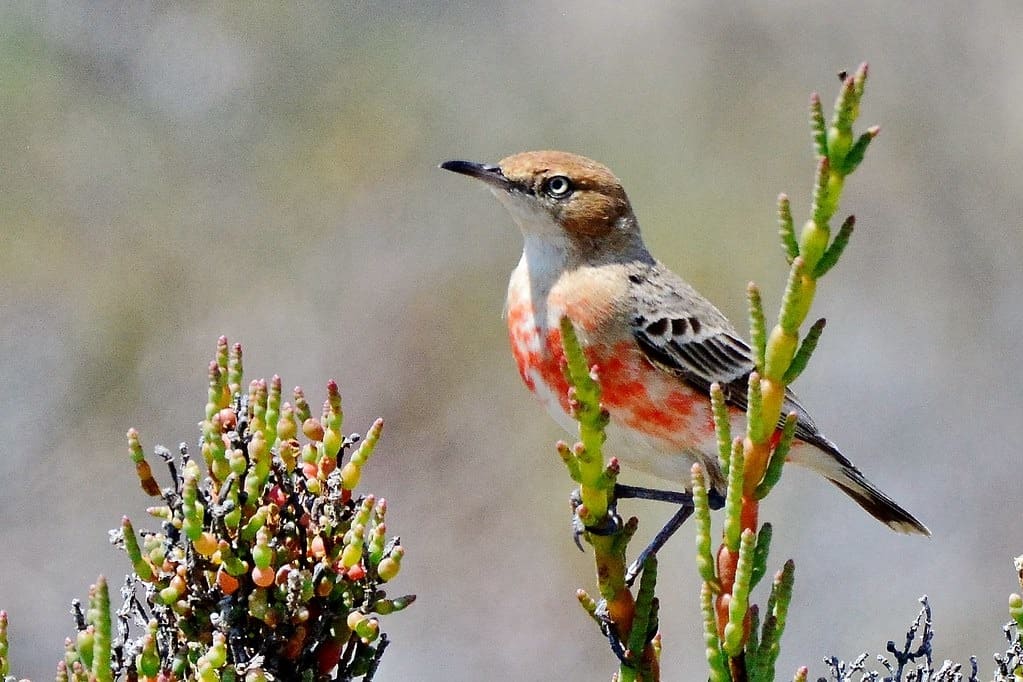 Image source: Laurie R B
Image source: Laurie R B
These birds venture into wetter regions when there’s not enough rainfall, allowing them to locate the finest flowers and nectar. While they don’t engage in regular seasonal migrations, groups of crimson chats may roam across a broad territory within their range, following the path of rain.
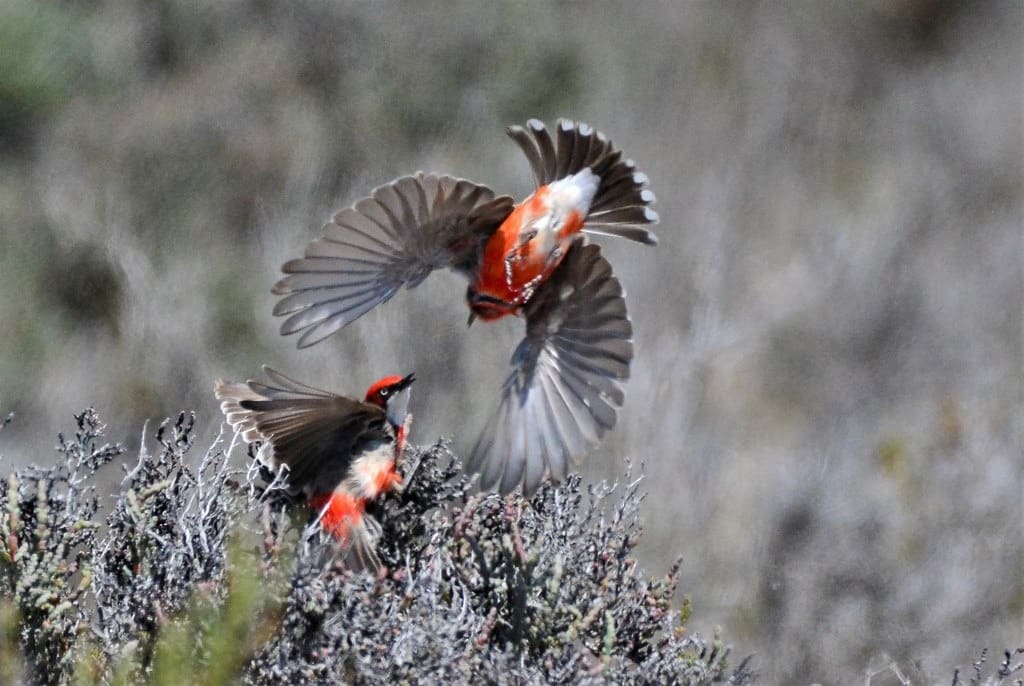 Image source: Laurie R B
Image source: Laurie R B
Crimson chats feed on insects and spiders found on the ground or in shrubs, using their brush-like tongue to gather nectar or pick up seeds from low-growing flowers. They tend to walk rather than hop, and you’ll usually spot them on or near the ground.
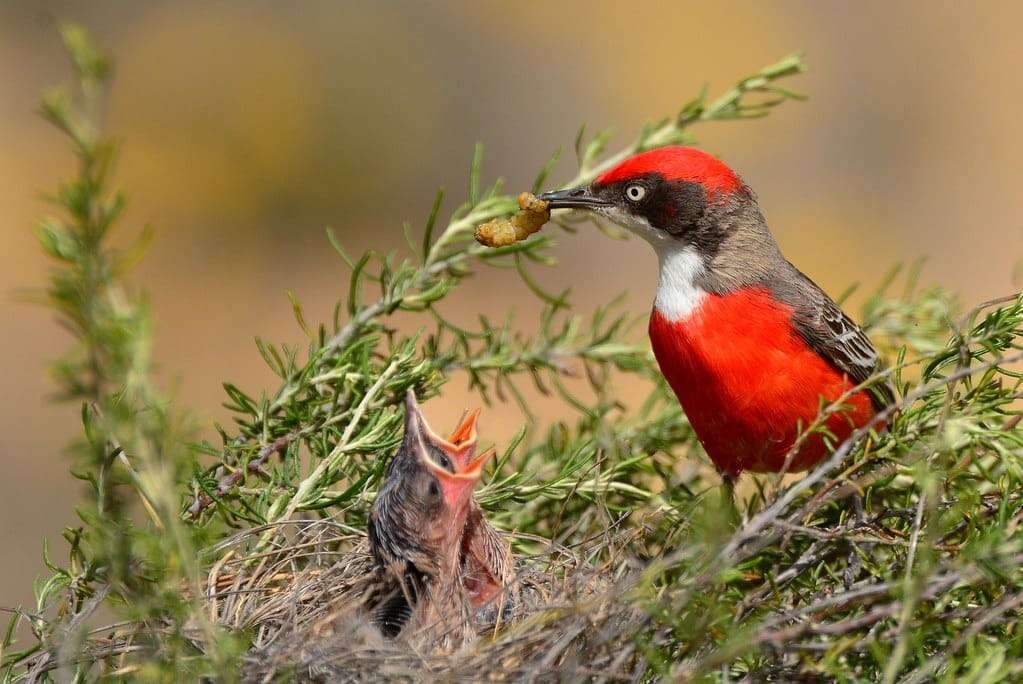 Image source: Laurie R B
Image source: Laurie R B
Breeding takes place between August and October in the southern regions, while in the drier northern areas, it can occur at almost any time following rainfall. During the breeding season and throughout the rest of the year, these birds form small flocks and pairs, establishing clusters of nests that are defended by both male and female chats. Nest construction is a joint effort, with the nests positioned close to the ground in low shrubs or grass. They are made using materials like grass, rootlets, hair, feathers, and twigs.
The female lays 2-4 eggs that are pink and white, with brown-red spots, measuring around 17 mm x 13 mm (0.67 in x 0.51 in). Both parents take turns incubating the eggs for a period of 12-13 days, and once the hatchlings emerge, both parents provide them with food for about two weeks until they are capable of flying and finding food on their own.
If a predator approaches the nest, either parent will feign an injury to divert the predator’s attention away from the nest. Predators that pose a threat include cats, snakes, foxes, and larger birds like ravens.
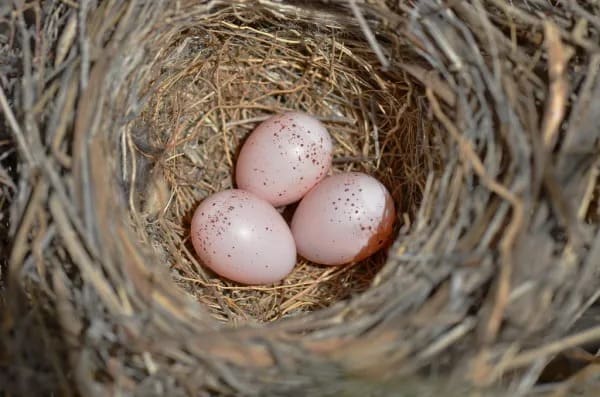 Image source: Laurie R B
Image source: Laurie R B
The relevant Federal and NSW organizations consider the conservation of this bird to be in a secure state, with the only notable concern being the presence of predators.
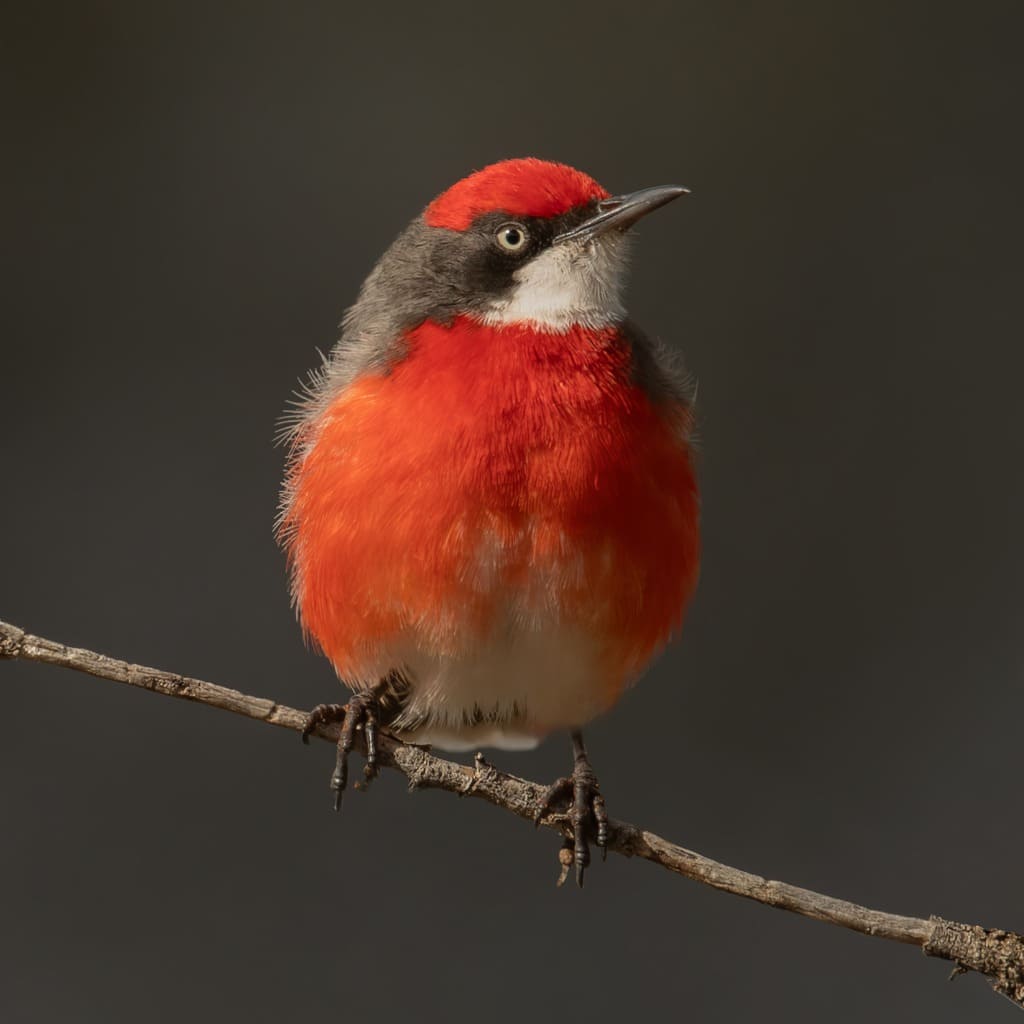 Image source: Laurie R B
Image source: Laurie R B
Watch the Video here:
Source: One Big Birdcage
ANIMALS
Amazing Video of Unseen Ocean Creatures in the Ningaloo Canyons

The Schmidt Ocean Institute recently explored the Ningaloo Canyons on the western coast of Australia using a robotic underwater vehicle called the ROV Sebastian. Check out the amazing video of what they discovered in the deep parts of the Indian Ocean.
More info: Youtube




ANIMALS
These Pics Are Art and the Artists Are Insects

Flying insects move so quickly that they are hard to follow, but new technology and some smart ideas have helped Spanish photographer Xavi Bou do just that. After spending 10 years focusing on birds in flight for his Ornithographies project, he turned his attention to insects.
For Entomographies, he uses high-speed video footage taken by Adrian Smith, an insect expert at North Carolina State University, to study and record how insects move. Bou then picks multiple frames and combines them into single images that show the fast movements of one or more insects through space and time.
With Smith’s help, Bou has captured the aerial tricks of wasps, the jumps of leafhoppers, and the fluttering of butterflies in amazing detail. He hopes that by doing this, he can make people more aware of the decline in important insect populations around the world.
1. Zebra longwing
This butterfly, which is common in many areas of the Americas, really fits its name. It can fly very high with just a few flaps of its large wings.
 Image source: nationalgeographic
Image source: nationalgeographic
2. Two-lined spittlebug
This insect, which comes from the eastern United States, is often seen as a pest because it likes to eat grass. Its springy back legs can make it jump into the air like a rocket.
 Image source: nationalgeographic
Image source: nationalgeographic
3. Yellow-collared scape moth
Unlike most moths, this North American species flies during the day. Its shiny blue-black wings sparkle in the sunlight.
 Image source: nationalgeographic
Image source: nationalgeographic
4. Ailanthus webworm moths
These tropical moths have spread farther north in the U.S. Because of their larval host, the invasive tree of heaven, they are now one of the most common backyard moths in the country.
 Image source: nationalgeographic
Image source: nationalgeographic
5. Common stonefly
Mostly found in eastern North America, this insect starts its life as an underwater nymph in forested streams or rivers. Then it leaves the water, sheds its skin, and becomes an adult with wings.
 Image source: nationalgeographic
Image source: nationalgeographic
6. Green lacewings
Eighty-seven species of this insect have been found in the U.S. and Canada. Since they eat a lot of unwanted plant pests like aphids and mites, they are often used to naturally control these pests.
 Image source: nationalgeographic
Image source: nationalgeographic
7. Grapevine beetle
This insect, fittingly named, eats the leaves and fruit of grapevines, both wild and farmed, but it doesn’t do much damage to the plants. As a type of scarab beetle, it often flies in a curved path.
 Image source: nationalgeographic
Image source: nationalgeographic
8. Oak treehopper and green treehopper
Treehoppers are known for their uniquely shaped pronotum, the part behind their head, which often looks like plant parts to hide from predators. They can jump well thanks to special muscles.
 Image source: nationalgeographic
Image source: nationalgeographic
9. Banded orange
This brightly colored butterfly can be found from Mexico to Brazil. Before mating season, male butterflies look for mineral salts, sometimes even drinking salty fluids from the skin, eyes, and nostrils of other animals.
 Image source: nationalgeographic
Image source: nationalgeographic
10. Sapho longwing
Longwings can live for 6 to 7 months, longer than most butterflies. This type, found from Mexico to Ecuador, has shiny blue wings, which is why it’s also called the Sapphire longwing.
 Image source: nationalgeographic
Image source: nationalgeographic
ANIMALS
Eagle and Fox in an Epic Midair Battle Over a Rabbit, Were Captured by a Photographer

Wildlife photography often depends on the perfect combination of good timing and the right place.
That’s exactly what happened when Kevin Ebi, an experienced wildlife photographer, captured an incredible battle between a bald eagle and a red fox, both competing for a rabbit meal.
In a detailed blog post, Ebi shares the fascinating series of events that unfolded while he was photographing foxes in San Juan Island National Historical Park, located in Washington state.
Ebi noticed a lively group of eight fox kits as they began their hunting lessons. Suddenly, they spotted a rabbit, and a thrilling chase ensued. Eventually, one of the foxes emerged as the winner, proudly carrying the rabbit across the field.
 Image source: Kevin Ebi
Image source: Kevin Ebi
Ebi shares what happened at that moment: “As I followed the fox with my camera, a sudden bald eagle cry caught my attention. It was swiftly approaching, clearly aiming for the rabbit. I quickly focused on the fox, anticipating a quick turnover of events.”
To Ebi’s astonishment, instead of a quick surrender, the situation turned into a intense fight in the air.
The eagle used its power to lift the fox and rabbit high up in the sky. Even while airborne, the fox attempted to break free by swinging back and forth.
 Image source: Kevin Ebi
Image source: Kevin Ebi
 Image source: Kevin Ebi
Image source: Kevin Ebi
 Image source: Kevin Ebi
Image source: Kevin Ebi
In the end, the eagle moved the rabbit to its other claw, causing the fox to let go. The intense battle came to an end in less than 10 seconds.
 Image source: Kevin Ebi
Image source: Kevin Ebi
For those worried about the fox’s well-being after the fight, Ebi reassures that it was not injured. The fox swiftly bounced back from the encounter and resumed its playful behavior with the other young foxes, showing no visible wounds from the aerial clash.
 Image source: Kevin Ebi
Image source: Kevin Ebi
 Image source: Kevin Ebi
Image source: Kevin Ebi
 Image source: Kevin Ebi
Image source: Kevin Ebi
 Image source: Kevin Ebi
Image source: Kevin Ebi
-

 GARDEN10 tháng ago
GARDEN10 tháng ago4 Easiest Ways to Get Free Plants
-

 ANIMALS10 tháng ago
ANIMALS10 tháng agoBritish Angler Caught Huge 67-Pound Goldfish in the World
-

 FUNNY10 tháng ago
FUNNY10 tháng ago30 Weirdest Things That People Came Across On The Subway
-

 FUNNY10 tháng ago
FUNNY10 tháng ago30 Funny and Perplexing Photos That Make You Laugh All Day
-

 GARDEN9 tháng ago
GARDEN9 tháng ago30 Shimmering Side Yard Landscape Ideas
-

 ANIMALS10 tháng ago
ANIMALS10 tháng agoKindhearted Driver Rescues Skinny Dog Hiding Near Highway Thanks to His Eagle Eye
-

 FUNNY10 tháng ago
FUNNY10 tháng ago22 Design Fails That Will Make You Laugh Out Loud
-

 ANIMALS10 tháng ago
ANIMALS10 tháng agoMore Than 3 Million People Baffled by Video of Strange Figure on the Beach





